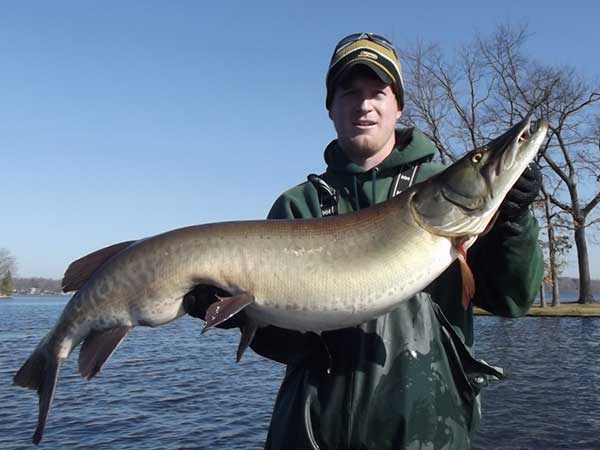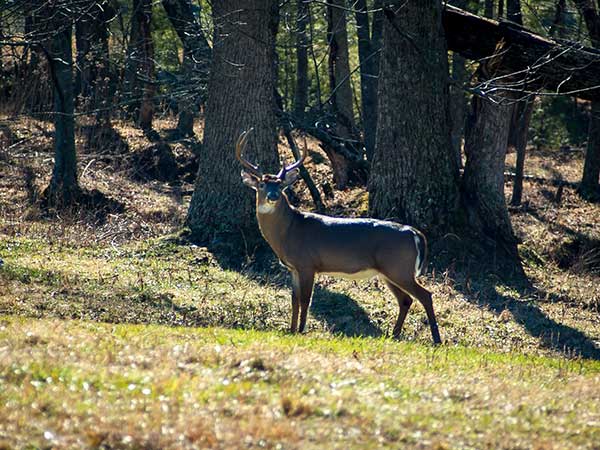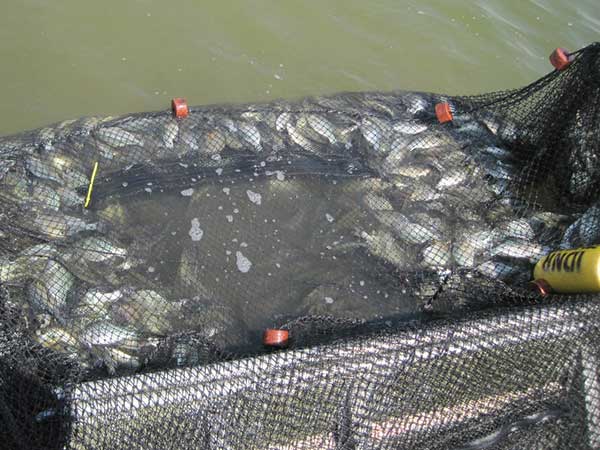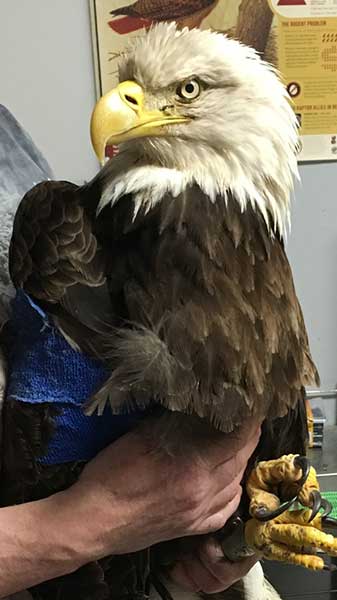- Details
(Provided by IDNR)
The Indiana DNR has a new deer biologist and a new mammologist.
Joe Caudell, the deer biologist, joins the DNR Division of Fish & Wildlife from Murray State University in Kentucky, where he had served as assistant professor of wildlife since 2013. He also has served as an adjunct professor in Purdue University's Department of Forestry and Natural Resources since 2011.
Taylor Rasmussen, the new mammologist, joins DNR Fish & Wildlife after earning his master's degree in biological sciences with a focus on small mammal ecology from Fort Hays State University in Hays, Kansas. He earned his undergraduate degree in biology from Morningside College in Sioux City, Iowa, in 2012.
- Details
(Provided by Indiana DNR)
 Biologists concerned that muskies are being moved by anglers.
Biologists concerned that muskies are being moved by anglers.
The list of northern Indiana waters where muskies can now be found continues to expand ó a trend DNR biologists say is not necessarily a good thing.
Although muskie fingerlings are stocked each year into eight lakes in the region to provide muskie fishing, muskies are now showing up in waters where no DNR stockings or legally permitted private stockings have occurred.
Not all lakes are suitable for muskies, a large predatory sport fish. The DNR stocks them in lakes with an overabundance of forage fish, such as gizzard shad. In lakes where forage fish aren't abundant, muskies could outcompete native sport fish such as largemouth bass and Northern pike for food.
"Our biggest concern is that some fish may find suitable spawning habitat, reproduce, and eventually compete with other fish," said Jeremy Price, northern Indiana fisheries supervisor. "So far muskie reproduction has been limited in Indiana. We would like to keep them where they are."
- Details
By Louie Stout
 Hunters took more bucks last fall. - Photo credit - Bob Robertson
Hunters took more bucks last fall. - Photo credit - Bob Robertson
If you thought there were fewer bucks to shoot last falls deer season in Indiana, think again.
In fact, the buck harvest was up statewide and Michiana was no exception. St. Joseph and adjoining counties all saw slight increases in the buck harvest.
Apparently Michiana hunters were more interested in shooting bucks than does because the antlerless harvest was down.
The statewide harvest was similar. The buck kill was up 10 percent while the antlerless harvest was down 1 percent compared to 2014.
- Details
(Provided by Indiana DNR)
 DNR studies crappie populations in northern Indiana.
DNR studies crappie populations in northern Indiana.
Catching nearly 5,000 black crappies in one day at Shipshewana Lake might be an angler's dream, but for Steve Donabauer the catch was nearly a nightmare.
Donabauer, a DNR fisheries biologist, caught them in late April in two trap nets as part of a region-wide study of crappie numbers and sizes. Most were small. Where crappies are over-populated, competition for food can be intense.
The first-of-its-kind study will help DNR biologists understand crappie populations in northern Indiana's glacial lakes. Previous information on crappies has been limited because they are difficult to catch in standard fish-population surveys.
"We bought some newly designed trap nets that can target crappies, especially in the spring," Donabauer said. "The huge catch at Shipshewana Lake obviously proved they work."
- Details
(Provided by Indiana DNR)
 Oldest wild bald eagle in Indiana rescued - Photo by Indiana Raptor Center
Oldest wild bald eagle in Indiana rescued - Photo by Indiana Raptor Center
Oldest wild bald eagle in Indiana rescued - Photo by Indiana Raptor Center
What's likely the oldest bald eagle living in the wild in Indiana was found with a dislocated wing and rescued near Worthington, in Greene County April 15.
It was the first time the 28-year-old bird had been sighted since leaving the hack tower at Monroe Lake in September 1987. Back then, it was too young to fly, and the DNR's bald eagle reintroduction program was in its infant stages, too.
"This bird represents everything we've done in Indiana in eagle restoration," said Allisyn Gillet, the DNR's nongame bird biologist.
The age of the bird was determined by a band identifying it as bald eagle C14. The sex of the bird has yet to be determined.


